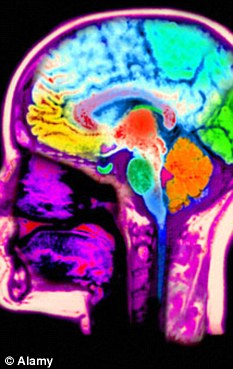摘要:爱情的力量堪称神奇。美国研究人员发现,志愿者注视爱人照片时,忍受疼痛的能力显著增强,真爱有助缓解疼痛。
加利福尼亚大学洛杉矶分校心理学副教授娜奥米·艾森伯格带领研究小组,征募17名处于长期恋爱或婚姻关系中的女性志愿者进行测试。
研究人员对志愿者实施相同刺激,每次刺激后用1至20分衡量她们的疼痛感,同时借助功能性磁共振成像技术(MRI)监测志愿者大脑活动。研究人员让志愿者注视不同照片,照片内容从伴侣、陌生人到蜘蛛、蛇等各不相同。结果显示,当志愿者看到伴侣照片时,代表身体感受到疼痛程度的分数显著降低。研究人员发现,志愿者注视伴侣照片时,大脑前额叶皮层活跃。与伴侣恋爱或结婚时间越长,受伴侣支持越多,这一区域活跃程度越高。
先前有研究显示,前额叶皮层与安全感相关,能够抑制大脑对害怕和焦虑的反应。加州大学洛杉矶分校研究人员在美国《国家科学院学报》(PNAS)发表论文说,这一区域也能缓解疼痛。研究人员还发现,当志愿者注视“另一半”照片时,负责压力反应的大脑背侧前扣带皮层欠活跃。
英国《每日邮报》7月6日援引艾森伯格的话报道:“我们发现,(恋爱或结婚)关系越久,这一区域越不活跃。”她说,蛇和蜘蛛的图片可能产生相反作用,因为在人类进化过程中,这类生物威胁着人类生存。
先前美国斯坦福大学一项研究结果显示,注视伴侣照片或与伴侣牵手有助女性缓解疼痛。不过,这是研究人员首次发现大脑负责情感的区域,有助了解情绪如何在大脑不同区域发挥作用,大脑如何处理消极情绪。
至于恋爱或结婚时间越长,疼痛感越弱的原因,艾森伯格说,这或许因为时间越长,伴侣给予的安全感可能越强。
“这显示所爱之人对我们的影响有多大,仅仅是想着他们或看着他们的照片,就可以缓解我们的疼痛感,”她说。
艾森伯格说:“在实际运用层面,如果你在忍受疼痛或处在痛苦中,让爱人陪伴在旁或携带一张爱人照片或许能够减轻痛苦。”

Brain: The ventromedial prefrontal cortex was linked to feelings of safety
生物探索推荐英文论文摘要:
Attachment figures activate a safety signal-related neural region and reduce pain experience
Abstract
Although it has long been hypothesized that attachment figures provide individuals with a sense of safety and security, the neural mechanisms underlying attachment-induced safety have not been explored. Here, we investigated whether an attachment figure acts as a safety signal by exploring whether viewing an attachment figure during a threatening experience (physical pain) led to increased activity in a neural region associated with safety signaling, the ventromedial prefrontal cortex (VMPFC), and corresponding reductions in pain. Female participants in long-term romantic relationships were scanned as they received painful stimuli while viewing pictures of their partner and control images (stranger, object). Consistent with the idea that the attachment figure may signal safety, results revealed that viewing partner pictures while receiving painful stimulation led to reductions in self-reported pain ratings, reductions in pain-related neural activity (dorsal anterior cingulate cortex, anterior insula), and increased activity in the VMPFC. Moreover, greater VMPFC activity in response to partner pictures was associated with longer relationship lengths and greater perceived partner support, further highlighting a role for the VMPFC in responding to the safety value of the partner. Last, greater VMPFC activity while viewing partner pictures was associated with reduced pain ratings and reduced pain-related neural activity. An implication of these findings is that, in the same way that stimuli that historically have threatened survival (e.g., snakes, spiders) are considered to be prepared fear stimuli, attachment figures, who have historically benefited survival, may serve as prepared safety stimuli, reducing threat- or distress-related responding in their presence.

Secure: Looking at pictures of a partner helped to reduce pain
生物探索推荐《每日邮报》相关英文报道
Forget aspirin because true love works as a painkiller, study reveals
True love really can help to reduce painful feelings, researchers have discovered.
Tests on 17 women found that they were less affected by stinging sensations while looking at pictures of their partners.
But their levels of discomfort actually increased when they were staring at images of spiders, objects or strangers.
The findings could help to pinpoint how emotions act on different areas of the brain and how uncomfortable feelings can be dealt with.
'On a practical level if you are someone enduring pain or going in for a painful procedure bringing a loved one with you or brining a picture of a loved one with you may reduce the pain of the experience,' the study's lead author Naomi Eisenberger told the Toronto Star.
Ms Eisenberger, an assistant professor of psychology at the University of California, Los Angeles, carried out the tests on 17 different women who were in long-term relationships.
An earlier study discovered that women felt less pain while they were either looking at a picture of their partner or while the person was holding their hand.
But this study, published in Proceedings of the National Academy of Science, is the first time that scientists have been unable to find the area of the brain that is responsible for the feelings.
Researchers used MRIs to monitor the women’s brains while administering stinging shocks to their body.
The women stared at pictures varying from their partner, strangers, or solid objects. They were then given a 20-point scale to use to rate their pain after each shock.
The pain scores were significantly lower for the women when they were looking at a picture of their partner.
The researchers discovered activity in the ventromedial prefrontal cortex which is associated with a feeling of safety.
The longer the women had been in the relationship and the more supported they were by their partner, the greater the level of activity in the ventromedial prefrontal cortex, or VMPFC.
The VMPFC is capable of inhibiting other pathways in the brain responsible for fear and anxiety. This area was also able to reduce pain, the researchers found.
Researchers also discovered that the dorsal anterior cingulate cortex, an area responsible for stress response, was less active when the women were looking at the photos of their other halves.
'We also found that people in longer relationships were showing greater activity in that region,' Eisenberger added.
She said that it could be arguesd that people who have been in their relationship longer may view their partner as a stronger cue for safety.
She added: 'This shows how strong of an effect our loved ones can have on us. They can lead us to feel less pain even when we’re simply reminded of them or looking at a picture of them.'
Ms Eisenberger said that the images of snakes and spiders could have produced the opposite effect because 'over the course of our evolutionary history things like snakes and spiders have threatened our survival'.







